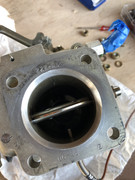Allan Moore
I'm New Here
I am getting 1420 EGT on Cyl 1 and 2 and only 1270 EGT on 3 and 4.
O 360 A1A with Precision MA-4-5 Carb. Advanced probes and engine monitor.
No air leaks at gaskets nor induction tube connectors. Probes are all equal distances from flange.
I suspect its just the way it is.
Was looking for spec from Lycoming on Max EGT.
additionally cylinder temps are even across all at 330's
O 360 A1A with Precision MA-4-5 Carb. Advanced probes and engine monitor.
No air leaks at gaskets nor induction tube connectors. Probes are all equal distances from flange.
I suspect its just the way it is.
Was looking for spec from Lycoming on Max EGT.
additionally cylinder temps are even across all at 330's





